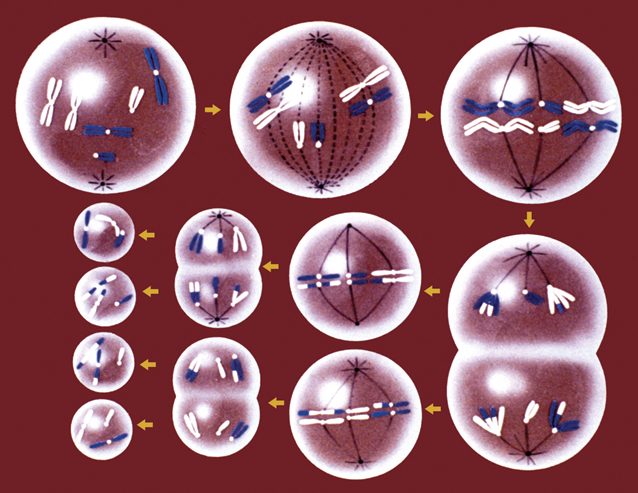
Figure 3.4 Schematic illustration of meiosis in sperm production This illustration is for a creature that has only three pairs of chromosomes rather than the 23 pairs that humans have. At the beginning (top left), each chromosome has already replicated itself and remains attached to its replica. The pairs of replicated chromosomes (one blue and one white in each pair in the diagram) then line up next to one another and exchange genetic material through a process called crossing over. The cell then divides twice, resulting in four sperm cells, each with just one member of each pair of chromosomes. Notice that each sperm cell is genetically different from the others, having a different mix of the original (blue and white) material from the parental pairs of chromosomes. The diagram greatly oversimplifies the effects of crossing over. In fact, each chromosome would cross over many times with its paired mate, resulting in a random mixing of genetic material. Meiosis in egg production is similar to that in sperm production, but only one of the two cells produced at each division survives.
© Educational Images Ltd./Custom Medical Stock Photo-All rights reserved.